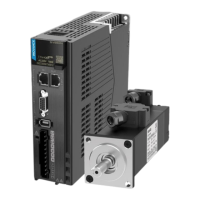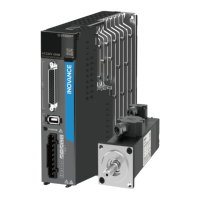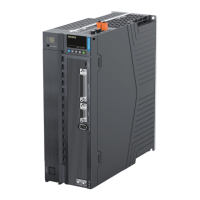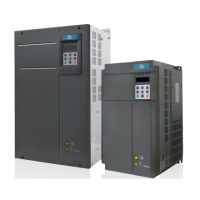General
‑18‑
Note
● The design of safety‑related systems requires specialist knowledge. To ensure that
a complete control system is safe, it is necessary for the whole system to be
designed according to recognized safety principles. The use of individual sub‑
systems such as drives with STO function, which are intended for safety‑related
applications, does not in itself ensure that the complete system is safe.
● The STO function can be used to stop the drive in emergency stop situations.
● In processes without personnel protection, it is recommended not to stop the
drive by using the STO function. If a drive running is stopped by using STO, the
drive performs a coast‑to‑stop. If this is not acceptable, the system should be
stopped using the correct mode instead of the STO function.
● This publication is a guide to the application of Inovance SV660 series safety
functions, and also on the design of safety‑related systems for machinery control.
● It is the responsibility of the designer of the end product or application to ensure
that it is safe and in compliance with the relevant regulations.
Risk Assessment
● When using the safety functions, perform risk assessment on the servo system in
advance. Make sure that the safety integrity level of the standards is met.
● The following residual risks can be present even when the safety functions
operate. Therefore, safety must always be given consideration during risk
assessment.
● If external forces (such as gravitational force with a vertical axis) are applied when
the safety functions are operating, the motor will rotate due to the action of these
external forces. Therefore, you must use a separate mechanical brake to secure
the motor.
Note
● In the case of failure of multiple IGBTs, regardless of whether the STO function is
enabled, the servo drive can generate an alignment torque. This torque can cause
the motor shaft to rotate within a range of up to 180÷p (for a synchronous
reluctance motor, the range is 180÷2p).
● p: Number of motor pole pairs.
To ensure safety, users should decide all the risk assessments and residual risks in the
entire machine equipment. A company and individual who constructed the safety
related system must take full responsibility for installation and commissioning of the
system. Additionally, when complying with a European machinery directive, the
related sub system must acquire safety standards certification, and the whole
equipment or system is subject to all risk assessments and safety class certification. It

